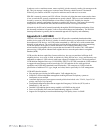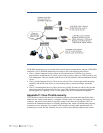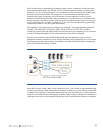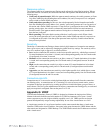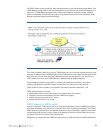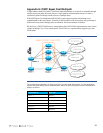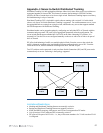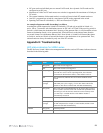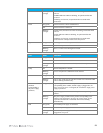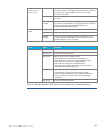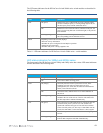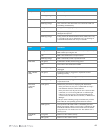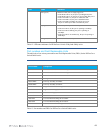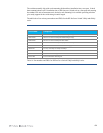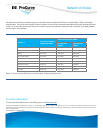
58
• ISC port can be an individual port or a manual LACP trunk, but a dynamic LACP trunk can’t be
configured as an ISC port.
• Maximum of 8 links in a DT trunk across two switches is supported with a maximum of 4 links per
DT switch
• The current limitation of 60 manual trunks in a switch will now include DT manual trunks too.
• One ISC is supported per switch for a maximum of 60 DT trunks supported in the switch.
• Spanning Tree Protocol is disabled (i.e., PDUs are filtered) on DT ports.
An example of upstream traffic forwarding is as follows
Assuming the uplink connected to Switch B is blocked by STP and only an uplink in Switch A is
active. Server 1 sent traffic with load-balance across its 802.3ad LACP links. If the receiving switch is
Switch A, which learns the destination MAC from any of the upstream links, it will forward the unicast
frames to destination directly via its upstream link. If Switch B receives the unicast frame from the
server and it learns DA (destination address) MAC from Switch A, Switch B will forward the frames
to Switch A, and in turn Switch A forwards the frames to the destination via its upstream link. Thus,
unicast frames are always forwarded by only one of the DT switches.
Appendix K: Troubleshooting
LED status indicators for 5400zl series
The HP ProCurve Switch 5400zl series management module has various LED status indicators that are
described in the following table.
LED State Indication
Power On (green) The switch is receiving power.
Off The switch is NOT receiving power.
Fault On (orange) On briefly at the beginning of switch self-test after the switch is
powered on or reset. If on for a prolonged time, the switch has
encountered a fatal hardware failure, or has failed its self-test.
Off The normal state; indicates there are no fault conditions on the
switch.
Blinking
(orange)
A fault has occurred on the switch, one of the switch modules, an
individual port, a power supply, or a fan. The Status LED for the
module or other device with the fault will flash simultaneously.
Test On (green) The switch self-test and initialization are in progress after you have
power cycled or reset the switch. The switch is not operational until
this LED goes off. The Self Test LED also comes on briefly when
you “hot swap” a module into the switch and the module is
automatically self-tested.
Off Normal operation; the switch is not undergoing self-test.
Blinking
(orange)
A component of the switch has failed its self-test. The status LED
for that component (for example, a switch module) and the switch
Fault LED will flash simultaneously.
DIMM On (green) Normal operation.
Off DIMM status is unknown.



